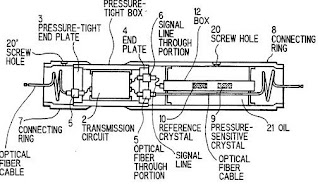
Water is essential for life. No living being on planet Earth can survive without it.
It is a prerequisite for human health and well-being as well as for the preservation of the environment.
However, four of every ten people in the world do not have access to a toilet; and nearly two in ten have no source of safe drinking water. Every year millions of people, most of them children, die from diseases associated with inadequate water supply, sanitation, and hygiene.
It is a prerequisite for human health and well-being as well as for the preservation of the environment.
However, four of every ten people in the world do not have access to a toilet; and nearly two in ten have no source of safe drinking water. Every year millions of people, most of them children, die from diseases associated with inadequate water supply, sanitation, and hygiene.
According to the World Health Organization, each and every day some 3,900 children die because of dirty water or poor hygiene; diseases transmitted through water or human excrement are the second-leading cause of death among children worldwide, after respiratory diseases.
Water scarcity, poor water quality, and inadequate sanitation negatively impact food security, livelihood choices, and educational opportunities for poor families across the world. Water-related natural disasters such as floods, tropical storms and tsunamis exact a heavy toll in human life and suffering. And all too regularly, drought afflicts some of the world’s poorest countries, exacerbating hunger and malnutrition.
Beyond meeting basic human needs, water supply and sanitation services, as well as water as a resource, are critical to sustainable development. It is a major source of energy in some parts of the world, while in others its potential as an energy source remains largely
 untapped.
untapped.Water is also necessary for agriculture and for many industrial processes. And in more than a few countries, it makes up an integral part of transport systems. With improved scientific understanding, the international community has also come to appreciate more fully the valuable services provided by water-related ecosystems, from flood control to storm protection and water purification.
Water challenges will increase significantly in the coming years. Continuing population growth and rising incomes will lead to greater water consumption, as well as more waste. The urban population in developing countries will grow dramatically, generating demand well beyond the capacity of already inadequate water supply and sanitation infrastructure and services. According to the UN World Water Development Report, by 2050, at least one in four people is likely to live in a country affected by chronic or recurring shortages of freshwater.
It seems there are more than few reasons to put water and sanitation at the top of the world’s agenda...
READ MORE: http://www.un.org/waterforlifedecade/spreadtheword.html

